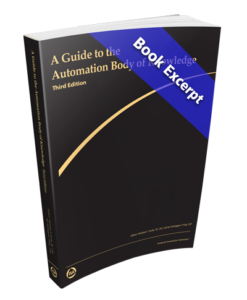AutoQuiz is edited by Joel Don, ISA's social media community manager.
This automation industry quiz question comes from the ISA Certified Automation Professional (CAP) certification program. ISA CAP certification provides a non-biased, third-party, objective assessment and confirmation of an automation professional's skills. The CAP exam is focused on direction, definition, design, development/application, deployment, documentation, and support of systems, software, and equipment used in control systems, manufacturing information systems, systems integration, and operational consulting. Click this link for more information about the CAP program.
Which of the following flow measurement devices does not require square root extraction?
a) magnetic flowmeter
b) venturi flowmeter
c) orifice plate
d) pitot tube
e) none of the above
Answers B, C, and D are not correct. These flowmeter types all require the measurement of a differential pressure that results from an obstruction of flow or from an impact of flow on an object. The venturi flowmeter uses a variable area flow tube (or throat) to develop a differential pressure upstream and downstream of the throat. The orifice plate uses a barrier plate with a hole cut into it, and the differential pressure across the orifice is measured to determine flow rate. The pitot tube uses the pressure of the fluid at an impact nozzle and a static pressure measurement to determine flow rate. In all three of these cases, flow is proportional to the square root of the measured pressure differential. Therefore, when measuring the output of an orifice plate meter, a venturi meter, or pitot tube, square root extraction is necessary to linearize the output for use in the control system. This square root extraction can be done at the device (transmitter) or at the control system (configuration of analog input), but should not be done at both places.
The correct answer is A, magnetic flowmeter. The output from a magnetic flowmeter is a linear signal that is proportional to the velocity of the flowing fluid. This measured output of velocity (ft/sec) multiplied by the area (ft2/sec) of the flow tube (usually "line size") yields the volumetric flow rate (ft3/sec).
Reference: A Guide to the Automation Body of Knowledge, Third Edition. By Nicholas Sands, P.E., CAP and Ian Verhappen, P.Eng., CAP.
About the Editor
Joel Don is the community manager for ISA and is an independent content marketing, social media and public relations consultant. Prior to his work in marketing and PR, Joel served as an editor for regional newspapers and national magazines throughout the U.S. He earned a master's degree from the Medill School at Northwestern University with a focus on science, engineering and biomedical marketing communications, and a bachelor of science degree from UC San Diego.





